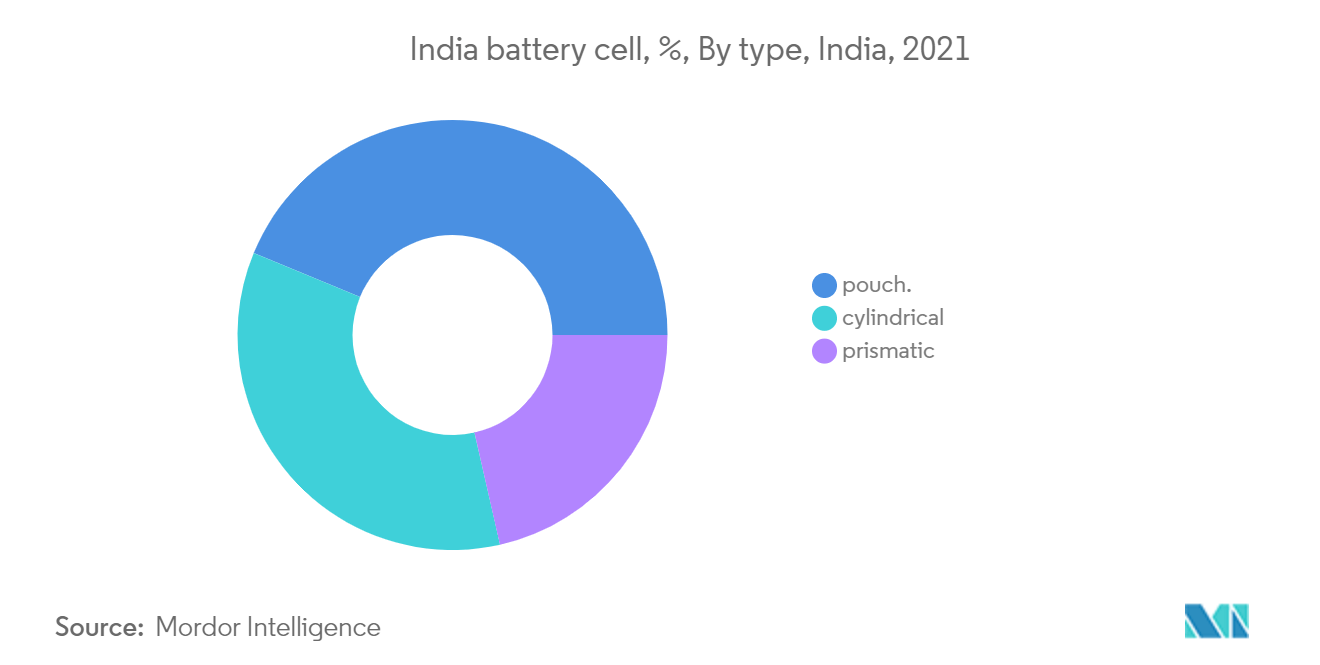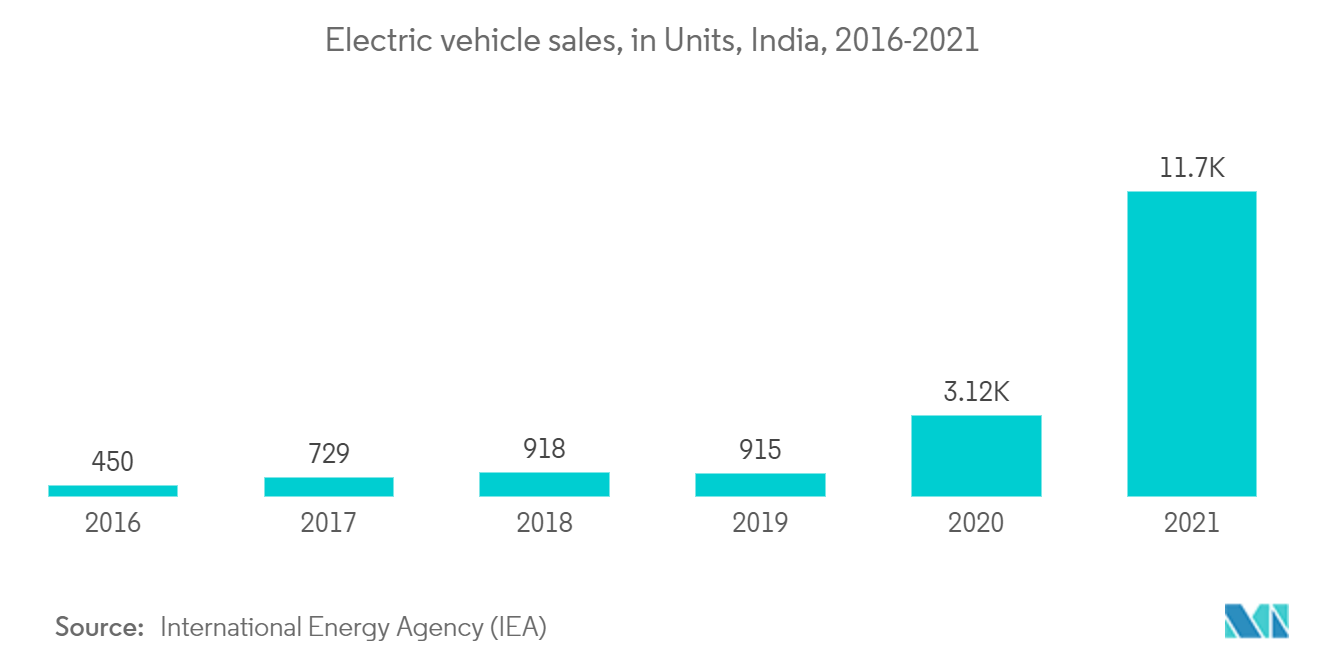Market Trends of India Battery Cell Industry
This section covers the major market trends shaping the India Battery cell Market according to our research experts:
Prismatic cell Segment is Expected to Dominate the Market
- Prismatic cells are a type of battery cell in the battery industry that were introduced in the early 1990s. The modern prismatic cell fulfills the demand for thinner sizes and comes wrapped in elegant packages like a box of chewing gum or a small chocolate bar. The prismatic cells make optimal use of space by using the layered approach. Other designs are wound and flattened into a pseudo-prismatic jelly roll. These cells are primarily found in cell phones, tablets, and low-profile laptops ranging from 800mAh to 4,000mAh.
- Prismatic cells are also available in large formats packaged in welded aluminum housings and deliver capacities of 20-50Ah. These are primarily used in energy storage systems and for electric powertrains in hybrid and electric vehicles. Hence, the larger size of the prismatic cells makes them bad candidates for smaller devices like e-bikes and cellphones. Further, lithium prismatic cells are the preferred technology for material handling equipment (MHE), as the technology provides the best ratio of power and energy per volume unit. Therefore, these battery cell types are better suited for energy-intensive applications.
- These battery cell types have gained popularity due to their large capacity and prismatic shape, making it easy to connect four cells and create a 12V battery pack, providing improved space utilization and allowing flexible design. It also has the highest Ah nominal capacity and kWh energy and a higher overall battery energy density than other cells. Further, these battery cells are not subject to swelling. Such advantages over different battery cell types make it preferable to the end-users. However, it can be more expensive to manufacture, less efficient in thermal management, and have a shorter cycle life than the cylindrical design.
- The Indian government anticipates that the Indian electronics manufacturing sector will reach USD 300 billion by 2024-25. Thus, the increasing demand for consumer electronics will likely increase the demand for prismatic and cylindrical battery cells in India during the forecast period.
- Battery cells used in India Prismatic and cylindrical battery cells are mainly used in various applications such as electric vehicles, mobile phones, data centers, telecommunications, and energy storage systems (ESS).
- According to the Indian Brand Equity Foundation (IBEF), the Indian appliance and consumer durables market is expected to grow at a CAGR of 9%, amounting to INR 3.15 trillion in 2022. Furthermore, The Indian government anticipates that the Indian electronics manufacturing sector will reach USD 300 billion by 2024-25. Thus, the increasing demand for consumer electronics will likely increase the demand for prismatic and cylindrical battery cells in India during the forecast period.
- Hence, owing to the above points, increasing investment in Battery cell infrastructure is like to drive the market during the forecast period.

Government policy and Increasing Adoption of Electric Vehicles Likely to Drive the Market
- Though the electric vehicle market is still in its initial stages in India, it is expected to witness significant growth as the government has undertaken various initiatives to promote electric vehicles in the country. India has a vision of becoming a major EV-adopting nation by 2030. In the country's mass adoption of electric cars, the government has announced several policies and incentives, which are expected to drive the market during the forecast period.
- India is one of the top five countries in the world for CO2 emissions. The government has taken the initiative to put favorable laws into place to expand the number of EV fleets on the road to reduce the problem of air pollution. The government has clarified that organizations wishing to install charging stations may do so without obtaining a license from the ministry. They also set a lofty goal to sell entirely electric vehicles after 2030. The Indian government has also developed a target for EV sales, accounting for 30% of private cars, 70% for commercial vehicles, and 80% for two- and three-wheelers by 2030. These initiatives are expected to drive the demand for batteries in the country, increasing the need for battery cells.
- Also, in April 2019, The "Faster Adoption and Manufacturing of Electric Vehicles in India" (FAME India) plan entered its second phase, according to India. With an emphasis on cars used for public or shared transportation (buses, rickshaws, and taxis) and private two-wheelers, it lowers the purchase price of hybrid and electric vehicles.
- In February 2020, the Indian Department of Telecommunications issued directions to the telecom service providers for using renewable energy solutions and energy-efficient technologies. Thus, such initiatives by the Telecom department will likely increase the demand for battery cells during the forecast period.
- The Government of India is currently in the process of introducing the 'Personal Data Protection Bill.' According to the bill, companies collecting the data will have to process the data in-house and in the country to protect data. The new regulation is expected to result in rising investments in data processing centers during the forecast period.
- In 2021, Electric vehicles sales is 11698 units as compared to 450 units in 2016. The demand of electric vehicle in India is increases.

